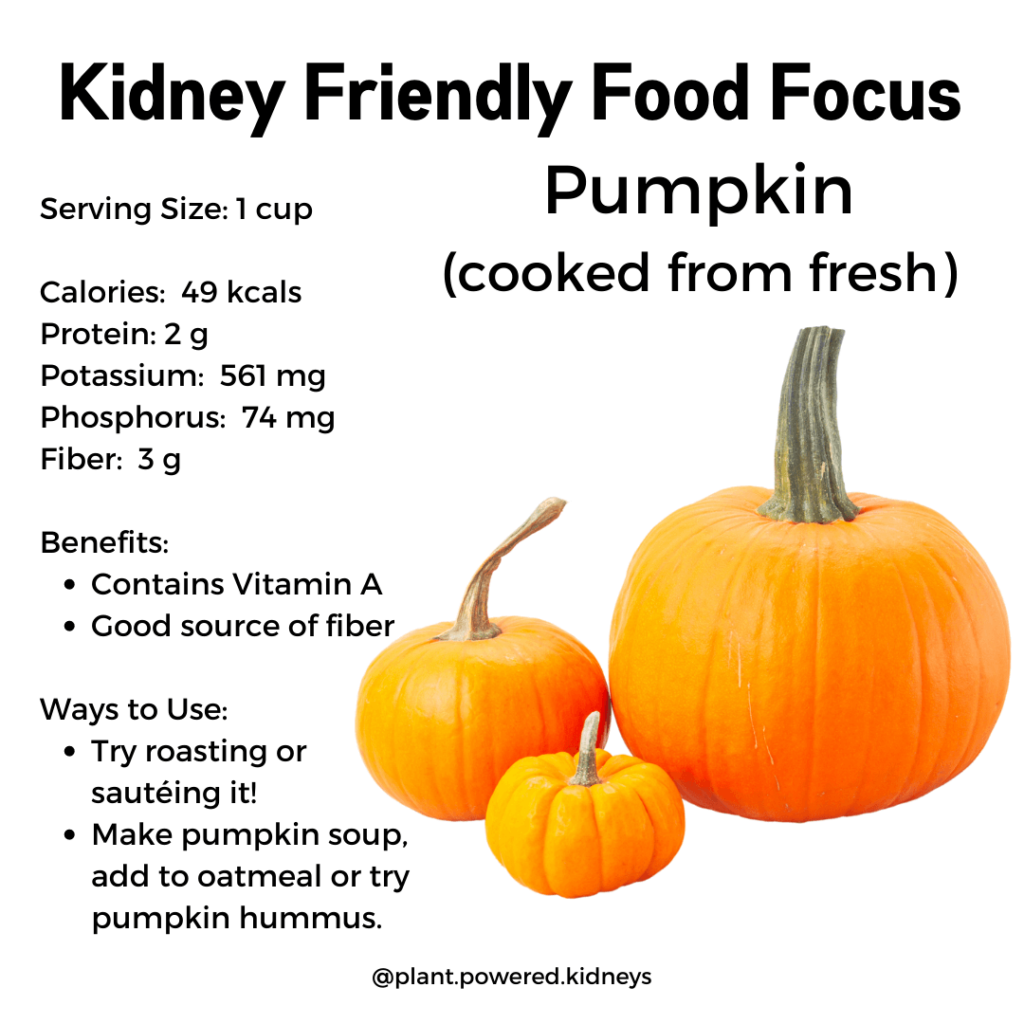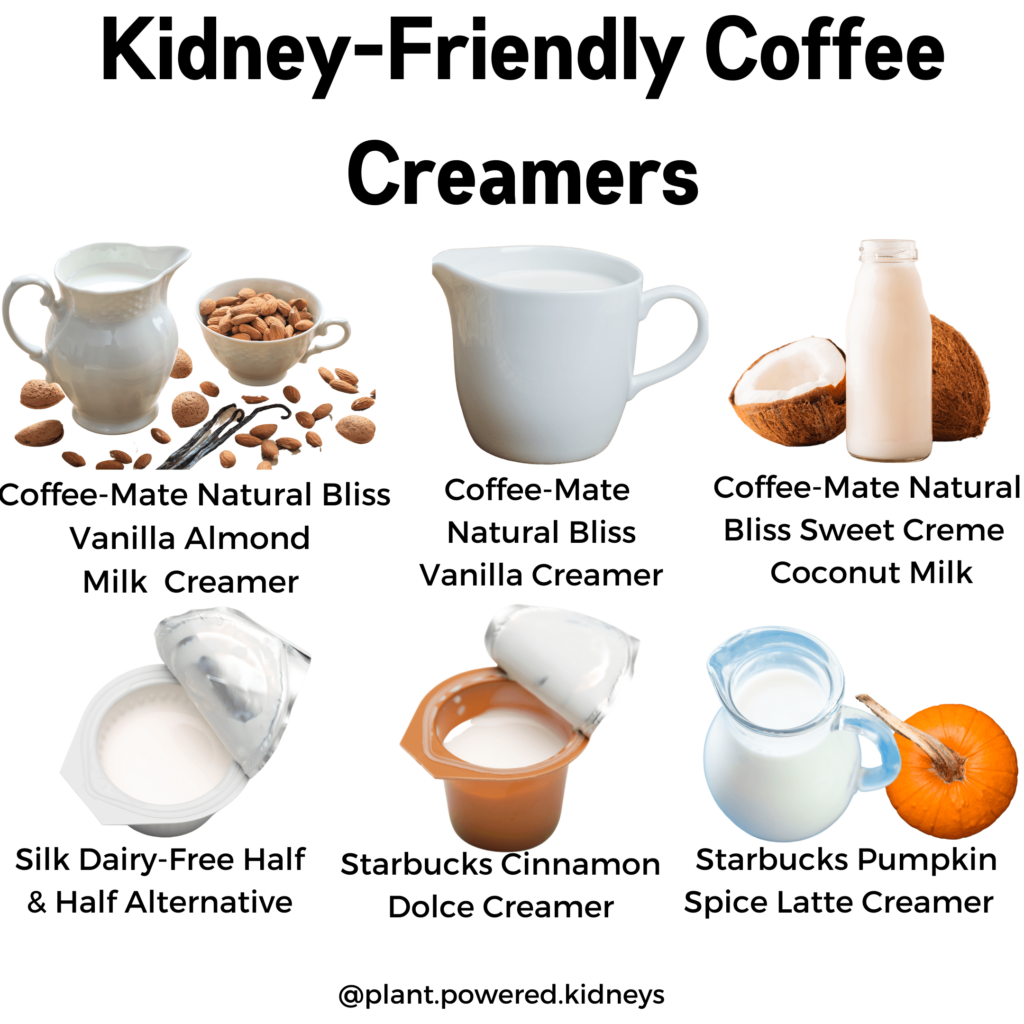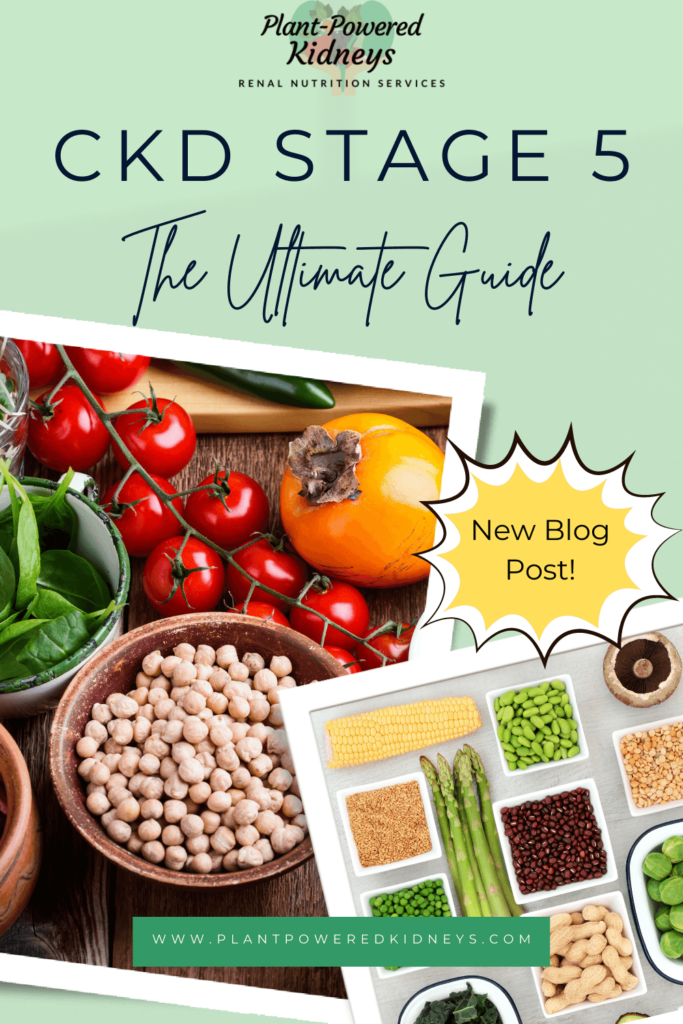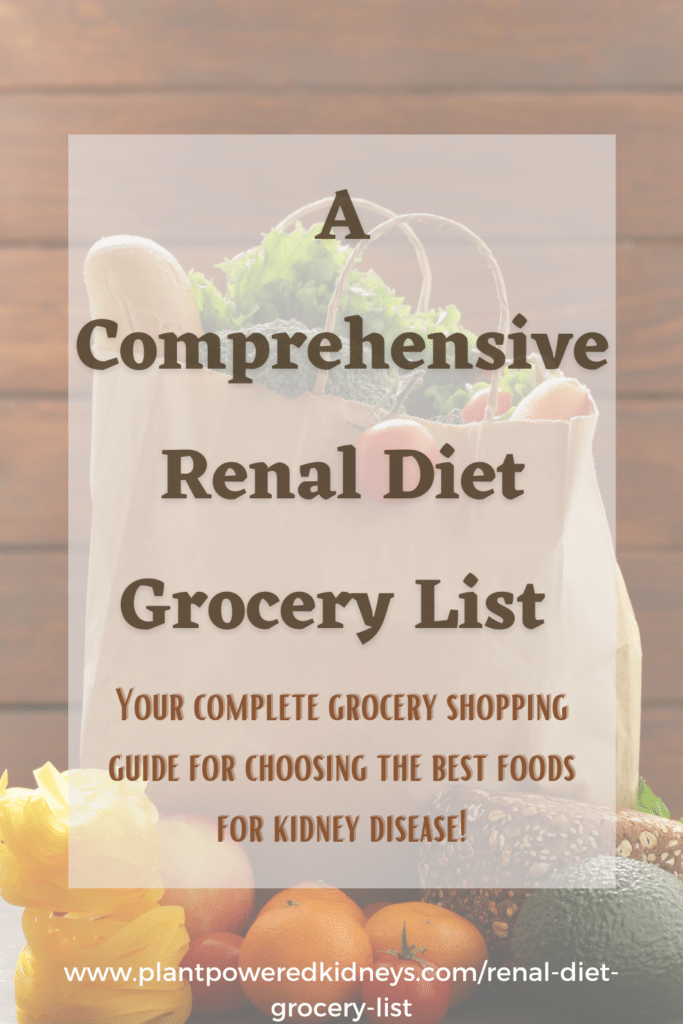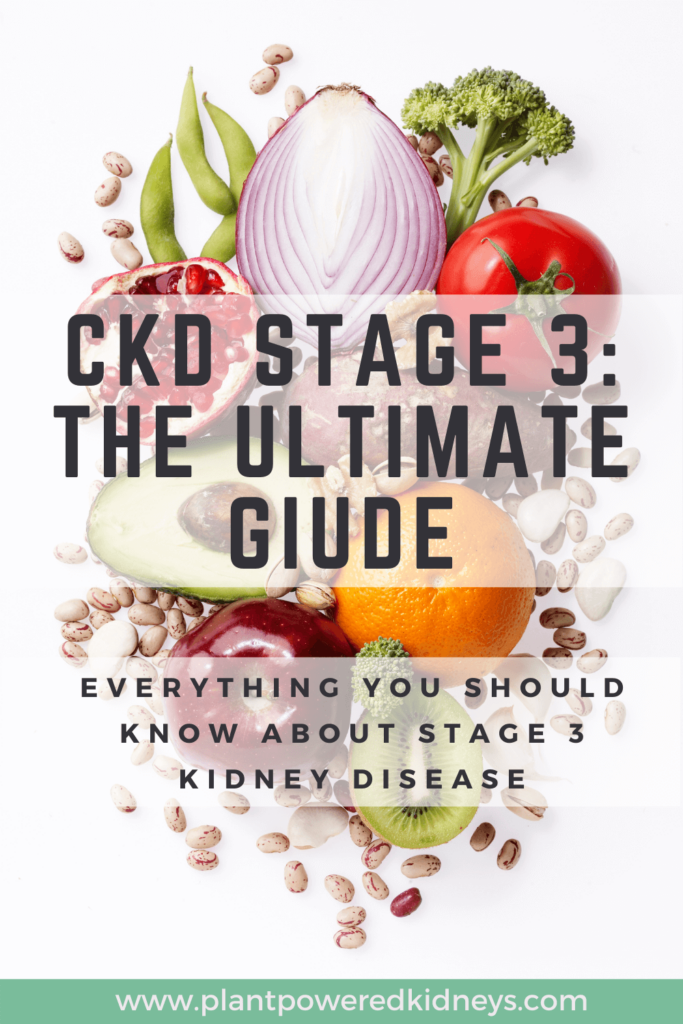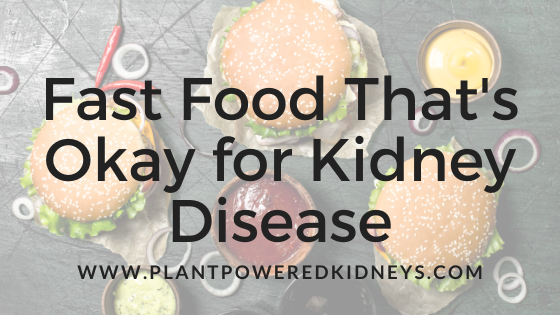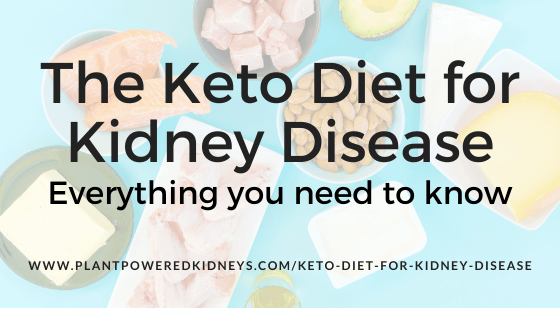Pumpkin Fall season is here! But is pumpkin safe to eat if you have chronic kidney disease? What about the potassium in pumpkin? Learn more about fitting pumpkin into a renal diet here.
If you’ve been to the grocery store lately, you’ve probably seen pumpkin-flavored items in every aisle, corner, and crevice of the store. Coffee, yogurt, bread, candles, toilet paper,… (well I haven’t seen the last one but it wouldn’t surprise me)!
And while these types of pumpkin-spiked goodies are great, sometimes there’s no beating a good pumpkin pie.
Table of Contents
Nutrition Facts for Pumpkin
Pumpkin is a type of winter squash. It provides vitamin A and potassium. One cup cooked from fresh pumpkin provides 561 mg potassium.
However, canned pumpkin provides 505 mg potassium per cup!
One of the most amazing things is that pumpkin is a great high-fiber food, with approximately 7 grams of fiber per cup. That’s more than 20% of the recommended intake!
By following a high-fiber diet, you will likely have healthier bowel movements. A healthy gut with regular bowel movements is something that helps prevent high potassium in the blood.
Pumpkin is traditionally only available fresh during the fall months, hence the pumpkin patches galore that pop up. The canned variety, however, is available year round!
Pumpkin Pie & Potassium
So if pumpkin is high in potassium, what about pumpkin pie?
One slice of commercially prepared pumpkin pie (weight of 133 grams) has 222 milligrams of potassium. This does qualify as a high potassium food.
If it’s a homemade pie using canned pumpkin pie mix, the mix itself will provide 373 milligrams of potassium per cup.
There are other pies that can be more fitting for the renal diet, like apple pie, cherry pie, and blueberry pie.
Low Potassium Pumpkin Pie
A colleague of mine at The Kidney RD has created a low potassium pumpkin pie alternative using a secret ingredient.
We’ve recommended this to clients ourselves that have given it rave reviews. Be sure to check it out if you’re looking for a kidney-friendly pumpkin pie recipe.
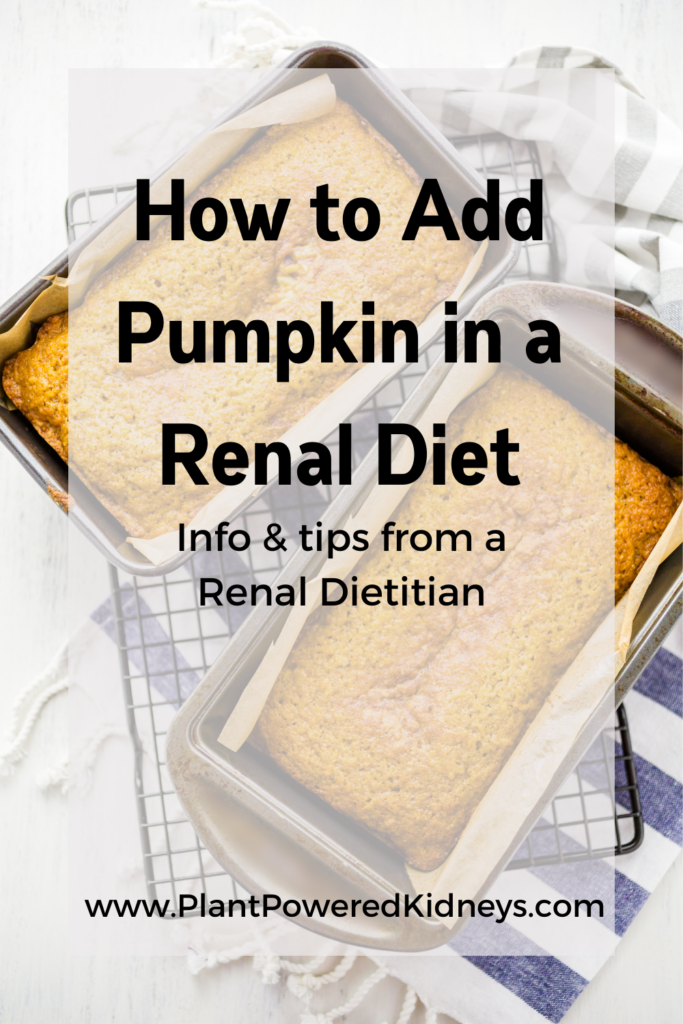
Since pumpkin is considered a high potassium food, is it bad for my kidneys?
Stage 3 Kidney Disease and earlier
Potassium is generally not restricted for those with earlier stages of kidney disease. The renal diet is more focused on getting enough nutrients then to preserve kidney function.
Stage 4 and 5 Kidney Disease (late stages)
While many people need more potassium, those with late-stages 4-5 chronic kidney disease may need to restrict potassium.
This restriction may be anywhere from 2,000 to 4,000 milligrams per day. This is determined by your nephrologist or (ideally) your dietitian.
That being said, even pumpkins can be included in the late-stage renal diet. By treating potassium like an allowance, one can “budget” their potassium to be used with certain higher potassium foods they prefer.
Read our comprehensive guide to stage 4 CKD here.
Read our stage 5 guide for CKD and the renal diet here.
Dialysis Diet and Potassium
A recommendation of 2,000-3,000 milligrams per day is generally needed for those with end-stage kidney failure on in-center hemodialysis. Home hemodialysis may have similar guidelines or encourage more potassium depending on how often you dialyze.
However, potassium is often encouraged for peritoneal dialysis. It is still individualized for each person and it all depends on your lab values and doctor’s order.
If your doctor or dietitian has told you to limit potassium, pumpkin may be something you may need to limit. That still doesn’t mean you can’t include it in your diet, though.
Tips to include pumpkin in a renal diet
Interested in adding pumpkin to your diet, but not sure how? We’ve got tips on adding in pumpkin without all the potassium here!

Use canned pumpkin in small amounts
As we said earlier, a fresh cooked or canned pumpkin is high in potassium if you use a lot of it. But if you only use a tablespoon or two, the potassium won’t be very high.
One tablespoon of canned pumpkin has just 32 grams of potassium!
By stirring in just 1-2 tablespoons of canned pumpkin into a meal, a significant amount of potassium won’t be added. But there’s a significant amount of flavor. 😉
Use a pumpkin pie spice blend
Making pancakes, muffins, or cake? Add one or two tablespoons of canned pumpkin into the mix for the pumpkin flavor. And don’t forget the low-potassium pumpkin pie spice blend!
Try pumpkin-spice flavored coffee and creamers
There are some great kidney-friendly coffee creamers out there that will give a kick of pumpkin spice love. Be sure to check for added phosphorus on the label.
Try new recipes!
We’ve got some more recipes for a renal diet right here for you that include pumpkin. We also include nutrition information because that can be an important part of a renal diet.
P.S. Did you know we have more meal plans available on our website for sale? Click here to check them out!
Summary
If you are a die-hard pumpkin fan, including pumpkin in the renal diet is possible!
Both canned and fresh, cooked pumpkin are each considered high potassium foods in that a cup of either provides over 500 milligrams of potassium.
But if you choose to use it to flavor your foods with just 1-2 tablespoons, you’ll be adding an incredibly small amount of potassium.
Try mixing into your meals and recipes to give a pumpkin flavor without the potassium. Be sure to use a pumpkin pie spice blend to get more flavor in it too without the sodium and sugar.
How do you like to add pumpkin to your renal diet? Share with below!

